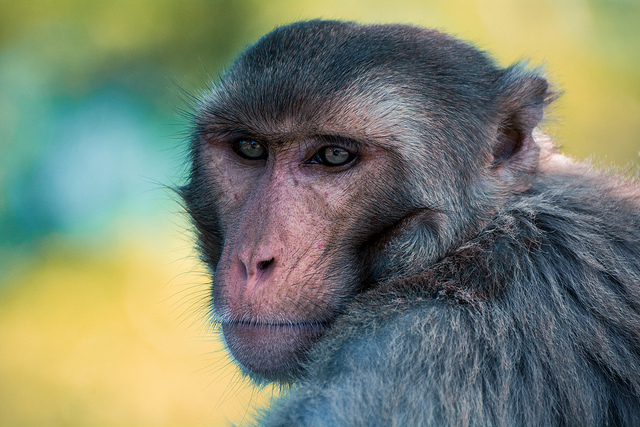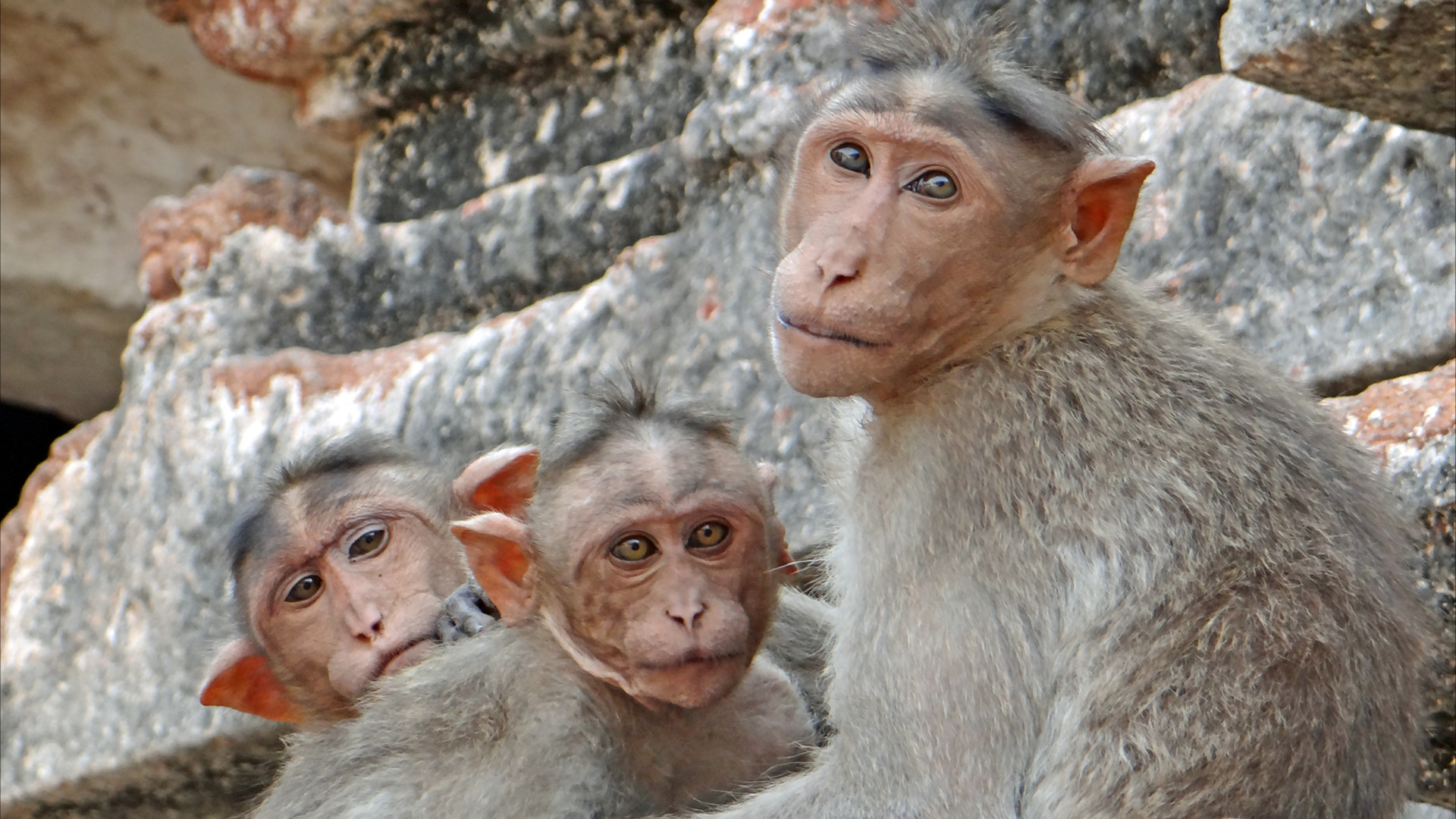Sometimes even common species can vanish in the blink of an eye.
That’s apparently the case with a well-known Indian monkey called the bonnet macaque (Macaca radiata). Although conservationists consider this species to be of “least concern” in terms of its extinction risk, new research reveals that populations of the macaque have actually crashed by nearly 50 percent since 2003 and more than 65 percent over the past 25 years.
Researchers warn that this species now faces “serious conservation challenges” in order to stave off further declines.
So why have so many bonnet macaques disappeared in recent years? For one thing, they’ve lost ground to an invading species, the larger and more aggressive rhesus macaque (M. mulatta), which outcompetes its smaller cousins for food and habitat. “It’s been a gradual invasion,” reports one of the study’s authors, Honnavalli N. Kumara with the Sálim Ali Centre for Ornithology and Natural History in Coimbatore, India. “The rhesus macaque is much more dominant species and highly adaptable,” which enables it to live in a wide range of habitats.

The bonnet macaques, on the other hand, use a much narrower range of habitats. They typically live in or near Hindu temples, tourist sites, agricultural fields and roadways, where until recently they had abundant sources of food. That has shifted over the past quarter-century. The vegetation these macaques depend upon has been replaced with what the researchers call “barren lands and urbanization,” with many areas either completed razed or dominated by buildings, roads and aqueducts. As a result, fewer than half of the bonnet macaque roadside populations observed in 2013 remain today.
The macaques have also vanished from nearly 50 percent of temple sites and tourist areas, in part because they are considered nuisances. As the researchers wrote in their paper, “there has been a tremendous increase in the number of people visiting temples and tourist places in India. It has been observed that the tolerance of people for macaques in such places has been decreasing and there have been frequent trappings and translocations of macaques from such places to unfamiliar habitats” where they do not appear to have thrived. The researchers conclude that these temple sites no longer pose stable habitats for the species.
This has all hit the monkeys hard – because, as the researchers were surprised to find, the species does not typically dwell in forests. “We had a notion that the species is common everywhere, but when we started the surveys of the primates in south India we realized that the bonnet macaques are in really low in numbers in the forest,” says Kumara.
Now that the decline has been documented, can it be stopped? That depends on how many of the threats to the macaques can be managed. “What we are taking is a composite impact, including the loss of trees for the road development, and regular translocation from agriculture fields, tourist spots and temples,” says Kumara. “These factors together will have an impact the species’ population and its growth and survival.”
But hope is not lost. The researchers have identified several untouched areas where the bonnet macaque could still thrive. They have also created a list of active conservation efforts that would help the species, such as planting fruit trees on roadways, establishing vegetation patches in agricultural plots and creating migration corridors. Even building artificial bridges between trees could help the animals get to the food they need without descending to the ground and bothering humans. Speaking of which, the researchers also suggest that it is important to educate farmers, villagers and temple devotees about living near macaques, as would stopping what they call “unscientific unplanned translocations.”
This roadmap proposed by the researchers could help not only the bonnet macaque but several other at-risk Indian primate species. As the researchers conclude, their paper offers “a model for developing conservation strategies for all such species,” whether they are of “least concern” or not.
Previously in The Revelator:
Climate Change Puts Sea Turtles in the Hot Seat


